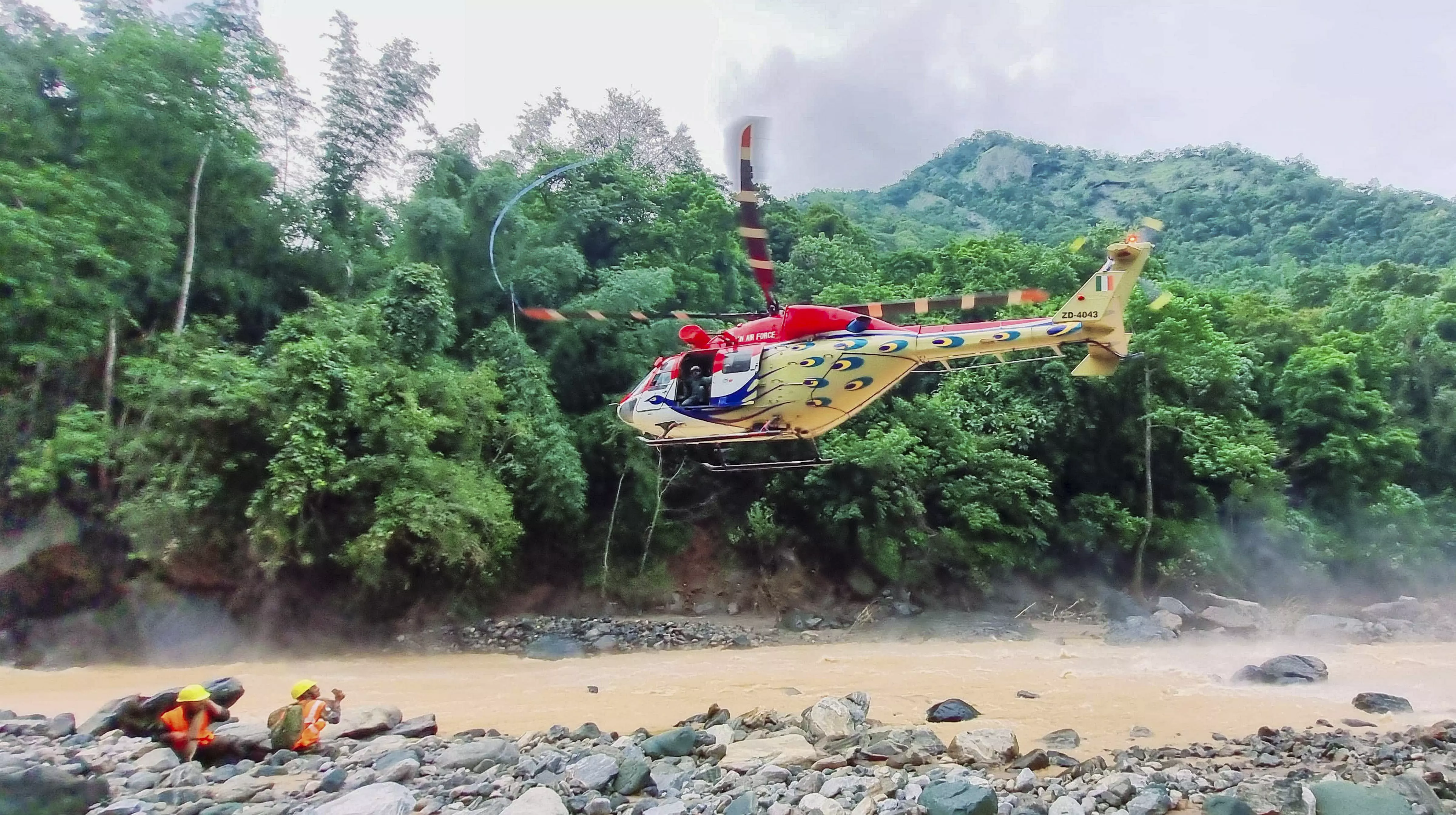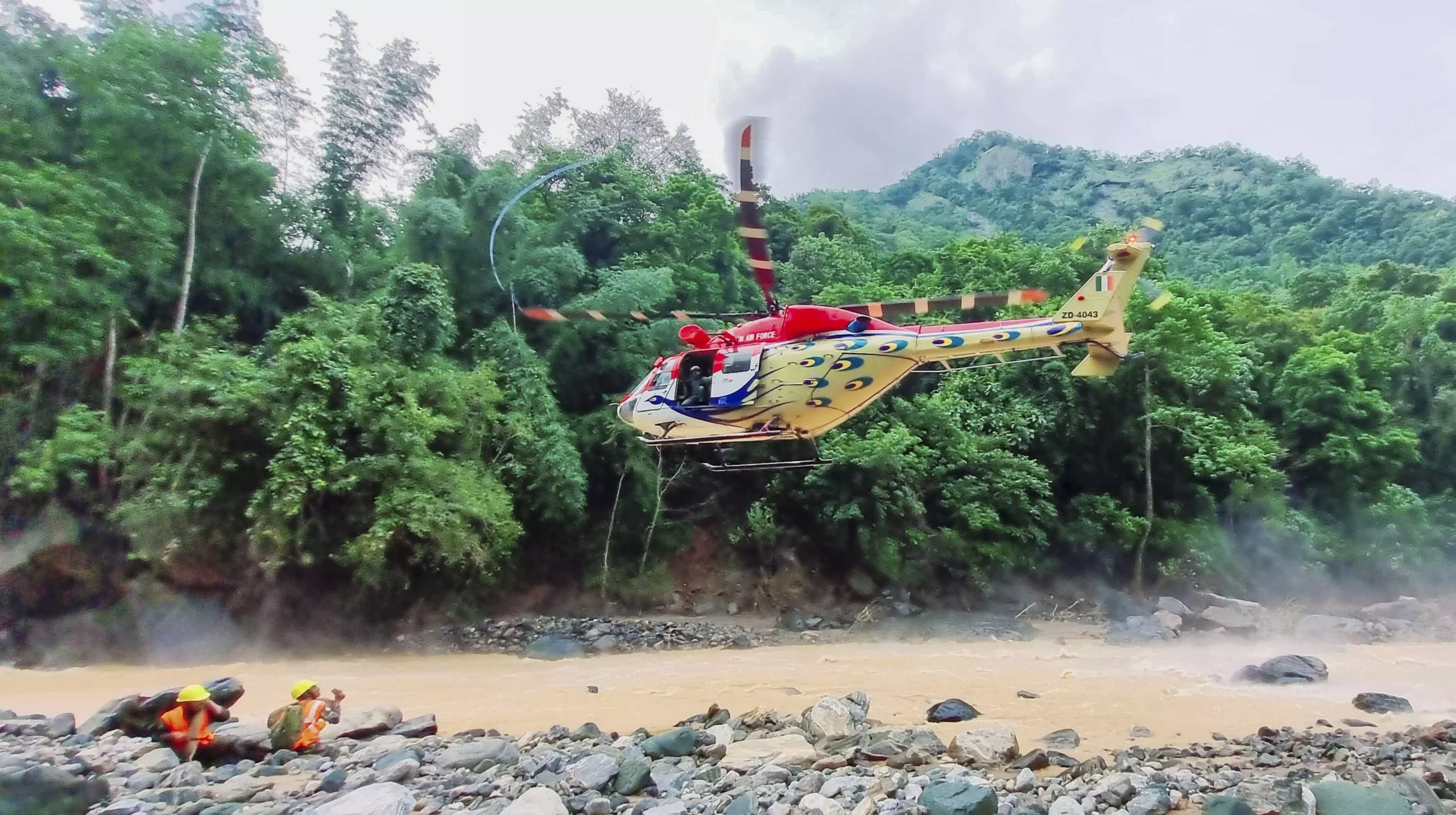
The science of climate change has taught us that human activity is responsible for adverse meteorological phenomena like unfavourable weather patterns and the degradation of geophysical assets like land or underground water aquifers. This erodes the neat distinction, drawn earlier, between natural disasters — earthquakes, volcanic eruptions, subsidence, floods, epidemics — which could only be managed, not prevented, and — anthropogenic disasters, linked to technology failures or direct human action like war. Sadly, nature does not discriminate between the poor and the rich whilst unleashing its fury — even though we know today that most disasters are human induced via policy failures encouraging indiscriminate consumption of natural assets by the latter.
Catastrophic events are on the rise, according to the Centre for Research on Epidemiology of Disasters (CERD) database. In 2021, globally 432 were recorded, versus 357 per year over the previous two decades. Most prominent were floods. During the monsoons, floods in India claimed 1,282 lives. In Afghanistan, floods claimed 260 lives. In China, floods claimed 352 lives, affected 14.5 million people, and imposed a cost of $16.5 billion — about 0.1 per cent of its current GDP. Floods and subsequent landslides were the second most severe disaster imposing a cost of $40 billion in Germany — about 0.9 per cent of its current GDP.
Five of the top ten most economically costly disasters occurred in the United States, imposing a total economic loss of $112.5 billion, about 0.5 per cent of its current GDP.
Natural disasters are very inequitable in their impact because the poor are less resilient.
Enhancing resilience can range from better forecasting of adverse weather events, the ready availability of resources to shift those likely to be affected, to safer locations, or more resilient infrastructure built in the first place. Individual choices also matter. Those with financial reserves can avoid risky behaviour by choosing how and when to work, and shelter from adverse weather events. Those without savings must work daily to survive and are thereby more exposed to disasters. Higher income allows the rich to build only on safer ground and spread their real estate bets across locations to deal with the apparent randomness of nature’s wrath. The poor get pushed to marginalised land parcels, prone to flooding or geologically unsafe for buildings, as is often the case in India’s hills, where a cloudburst or rain-induced landslides cause havoc.
In 2021, Asia suffered 40 per cent of all disasters, accounting for 49 per cent of the total fatalities and 66 per cent of the total number of people affected, versus its share in global population of about 60 per cent. The lesson is that disasters cost more in human lives in poorer developing countries but impose higher nominal economic costs on the rich world.
The skewed nature of the impact is primarily because economists value both lives and assets in terms of their productivity or GDP added per person (per capita GDP). On average, poor economies PCGDP for 2024-25 is less than $1,145 (current terms). In lower-middle income economies, like India, it ranges between $1,145 to $4,515. Upper middle-income countries like China range between $4,516 to $14,000 while in the rich, high-income world it is above $14,005. China is nearing graduation to the rich world whilst India is yet to graduate into the upper middle-income level. The higher the productivity, the higher the value of lost lives or destroyed assets.
A recent study paper “Human development and disaster mortality: Evidence from India” investigates the relationship between the Human Development Index (HDI) and fatalities resulting from floods and cyclones across 19 Indian states over the period 1983 to 2011. The HDI was a United Nations proxy metric for equitable development, since replaced, after 2016, by the more comprehensive sustainable development goals index. A one-point increase in HDI leads to 85 less human fatalities due to floods after one year, 141 after two years, and 173 after three years. Better cyclone disaster management capacity which increases HDI by 1 point can progressively reduce fatalities from 12 individuals in the first year, to 69 in the third year. So, the route to disaster resilience is via equitable development — a plausible “mantra”, but not templated globally by actionable plans with evaluated trade-offs between equity and growth.
In the absence of templated trade-offs, governments focus on new infrastructure which gives immediate relief to consumers in their daily lives. Increasing road length and widening roads immediately reduces congestion, providing relief to the commuting public at large.
But the low resilience of such structures is highlighted only once a disaster occurs — heavy rains or floods wash away roads or bridges constructed without adequate drainage. Often construction creates new sources of flooding by impeding the natural drainage of water.
Famously, the lawns of the one-acre plush, colonial government bungalows in New Delhi’s Lodhi Estate flood regularly during the monsoon because they were built by filling a natural drain for the area. Bengaluru has similar examples of encroachments of the catchment areas of tanks, and Mumbai of encroachments in select coastal or riverine areas. High population-density Kerala offers the most recent example of floods and landslips in Wayanad district.
Consider the effect of lopsided development plans. Indian Railways privileges service extension, over providing a protection system from train collisions (Kavach) for the existing 24 million daily passengers. The need for safety is resurrected every time one of the 70-odd accidents per year occur. But more services respond to the daily needs of the much larger unserved travelling public. Similarly, despite high awareness of inadequate road safety, protective airbags for passengers in the back seat of cars are still not compulsory for fear that it reduces the “affordability” of the car, depressing sales, and GDP, never mind the risk to passengers.
India, like all developing countries, tends to walk the “knife edge” between getting the maximum bang for the buck spent whilst potentially courting disaster which, ironically, shrinks GDP instantly and indirectly over time. The path to a developed economy must run through the imposition of compulsory, higher safety standards. All utility and service providers must compulsorily bundle generous consumer and third-party liability coverage into their tariffs and hand-hold payouts. This is necessary for India to become a hydrogen and nuclear-powered economy. The Union and state governments could subsidise the insurance premiums to avoid price escalation and compression of aggregate consumer demand. Managing nature’s fury equitably, in a just manner, is a new, near-term priority.
